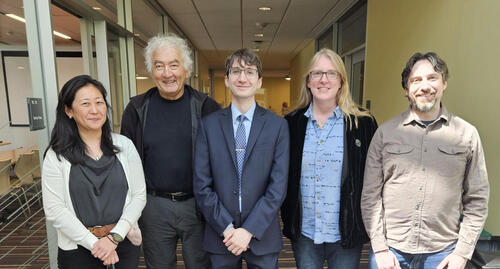
On April 11, 2023, Daniel Nemes successfully defended the thesis “Semi-Inclusive Measurement of the Shared Groomed Momentum Fraction of Jets in Au+Au Collisions at STAR” (advisor Helen Caines).
Nemes explained, “The Quark-gluon plasma (QGP) is a novel state of matter that is studied in the high temperatures and energy densities created during relativistic heavy-ion collisions. Within these collisions, collimated sprays of particles known as jets are produced and interact with the QGP medium. Through the modification of jets due to traversing the medium we can study the properties of the QGP. My thesis explores utilizing a novel technique for measuring the substructure of jets to deal with the large fluctuating background found while measuring jets in heavy-ion collisions.”
Thesis abstract:
Jet quenching is one of the main signals used to investigate the properties of a quark-gluon plasma (QGP). Besides energy loss, jet quenching can also manifest in the modification of jet substructure. This thesis focuses on using STAR data to measure the substructure observable zg, a result of SoftDrop grooming, which probes the physics of the first hard splitting of a hard-scattered parton. As opposed to previous measurements, this thesis explores employing a semi-inclusive approach to measure zg, selecting candidate jets found within the recoil region of a high transverse momentum trigger particle. Requiring a high transverse momentum trigger object is expected to induce a surface bias on the event selection, potentially causing selected candidate jets in the recoil region to biased towards having a longer path length within the medium. Consequently, these jets are expected to be more quenched and thus are good candidates to probe for modification of zg at RHIC energies. Combinatorial jet contribution, arising from the large fluctuating background in heavy-ion collisions, is subtracted at the ensemble level, as opposed to employing jet-by-jet discrimination, in order to avoid imposing biases on the selected jet sample.